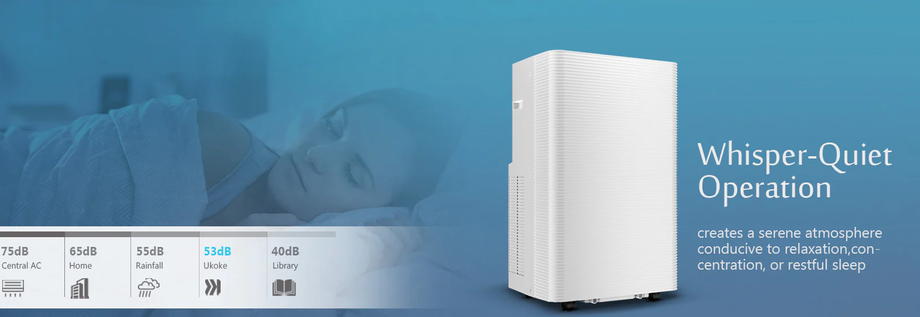As temperatures rise, finding effective ways to keep your living space cool becomes essential. While traditional air conditioning systems can be costly and require complex installations, a portable AC offers a convenient and affordable alternative. This guide will walk you through everything you need to know about portable air conditioners, helping you make an informed decision for your home.
Understanding Portable Air Conditioners
It is a compact, self-contained unit that can be moved from room to room, providing flexibility and convenience. Unlike window units, portable ACs don't require permanent installation, making them ideal for renters or those who need temporary cooling solutions. These units typically come with a hose that needs to be vented out of a window or through a wall to expel hot air.
Key Features to Consider
When choosing a portable air conditioner, there are several key features to consider to ensure you select the right model for your needs:
1. Cooling Capacity
Measured in British Thermal Units (BTUs), the cooling capacity of a portable AC determines how effectively it can cool a space. More cooling capacity is associated with a higher BTU rating. For instance, a unit with 8,000 BTUs is suitable for a small room, while a 14,000 BTU model can cool a larger area.
2. Energy Efficiency
Look for models with high Energy Efficiency Ratios (EER) to save on energy costs. An energy-efficient AC not only reduces your electricity bills but also minimizes its environmental impact.
3. Noise Level
Particularly if you intend to utilize the unit in an office or bedroom, it is crucial to evaluate the unit's decibel level. Most portable air conditioners produce noise levels between 50 to 70 decibels, with quieter models available for more sensitive environments.
4. Additional Features
Modern portable AC come with a range of additional features, such as programmable timers, remote controls, and air purifiers. These features enhance convenience and improve the overall air quality in your home.
Installation and Maintenance Tips
Installing a portable air conditioner is relatively straightforward. Here are some tips to ensure optimal performance:
· Placement: Position the unit near a window for easy venting. Ensure that there is sufficient clearance around the unit to facilitate appropriate airflow.
· Ventilation: Secure the exhaust hose to the window kit to effectively expel hot air. Check for any leaks to maintain efficiency.
· Regular Cleaning: Clean the air filters and drain the water reservoir regularly to prevent mould and maintain air quality.
· Storage: Store the unit in a dry place during off-seasons to prolong its lifespan.
Benefits of Using a Portable AC
They offer numerous benefits that make it an attractive option for many homeowners:
· Flexibility: Easily move the unit to different rooms as needed.
· Cost-Effective: Lower upfront and operational costs compared to central air conditioning systems.
· Easy Installation: No permanent installation is required, making it ideal for renters or temporary cooling needs.
· Space-Saving: Compact design fits well in small spaces, and some models even double as dehumidifiers or heaters.
Conclusion
In conclusion, a portable air conditioner is a versatile and efficient solution for keeping your home cool during hot weather. By considering factors like cooling capacity, energy efficiency, noise level, and additional features, you can find the perfect unit to meet your needs. For a wide selection of high-quality ACs, visit Ukoke.com.
FOR MORE INFO :-
indoor portable air conditioner
ultrasonic jewelry cleaner machine






Comments